We’d be the first to admit that unveiling a new car can be a bit overwhelming these days. There’s a lot to go through, and few can claim to be worthy of your undivided attention. But the rules are different whenever Bugatti unveils what it likes to call a “hyper sports car.” And that’s because its track record in producing ground-breaking, era-defining cars is exemplary. The Veyron was the first 1001hp road car at the start of the 21st century, setting a new and lasting benchmark for our definition of high performance. Then came the 1,500-hp Chiron, which in 2019 proved capable of topping 300 mph—something other manufacturers still aspire to half a decade later. Bugatti reckons that together its cars have “changed the world”. It’s probably not bad.
Now, the new Bugatti is finally here, and by virtue of being the first in over 20 years not to be powered by an 8.0-litre quad-turbo W16 – and it’s a hybrid mastered by Mate Rimac – it’s setting a historic precedent by default. But with a stunning naturally aspirated V16 engine providing the lion’s share of 1,800bhp and an all-new carbon-composite chassis underpinning the car, it’s clear from the start that the firm has tried to make good on its claim that the newcomer “was meant to be in in every way incomparable”. Hence the name: Tourbillon – a reference to the “complicated and beautiful” mechanism that was invented 200 years ago to counter the effect of gravity on watches, and is still very much in use today.
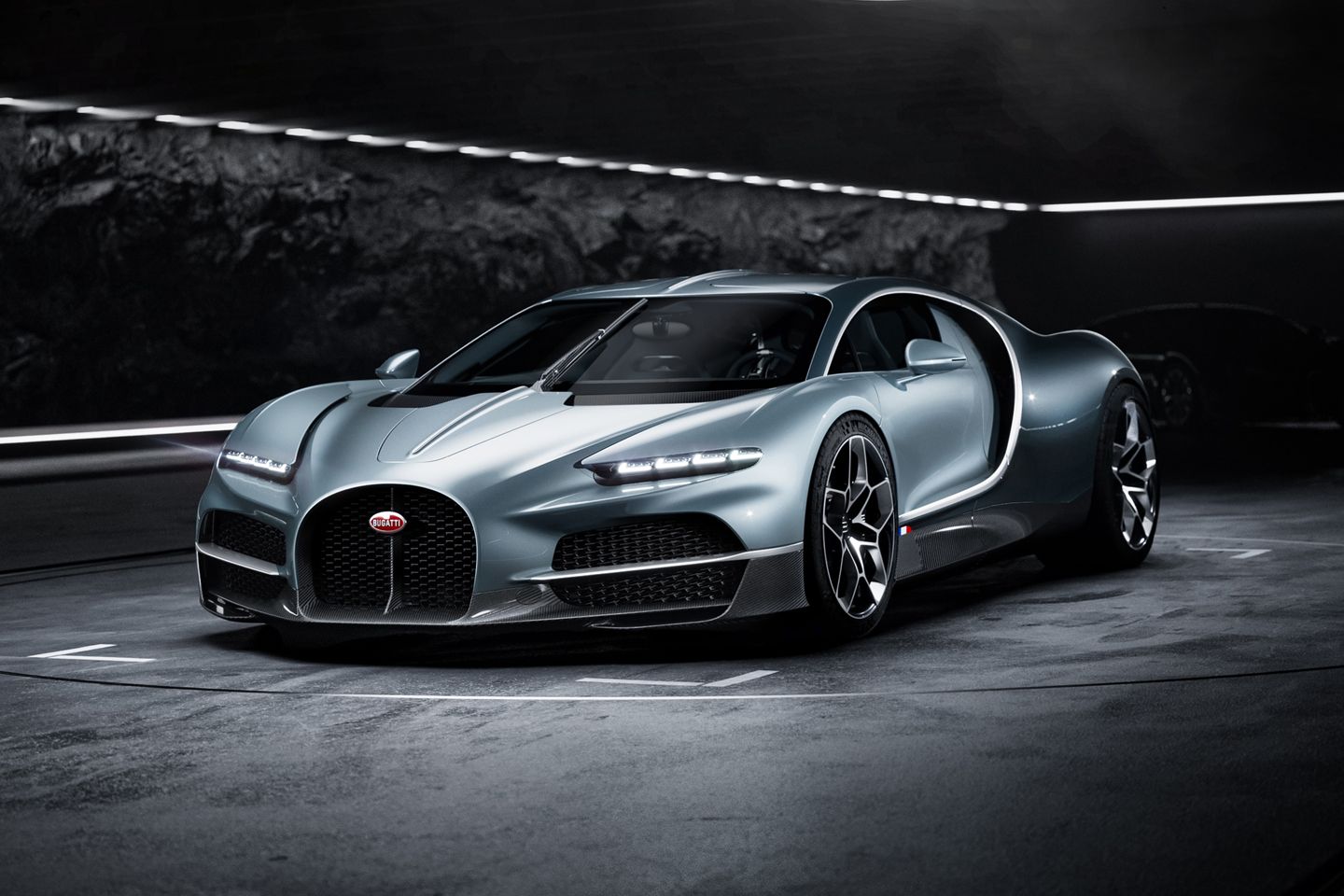
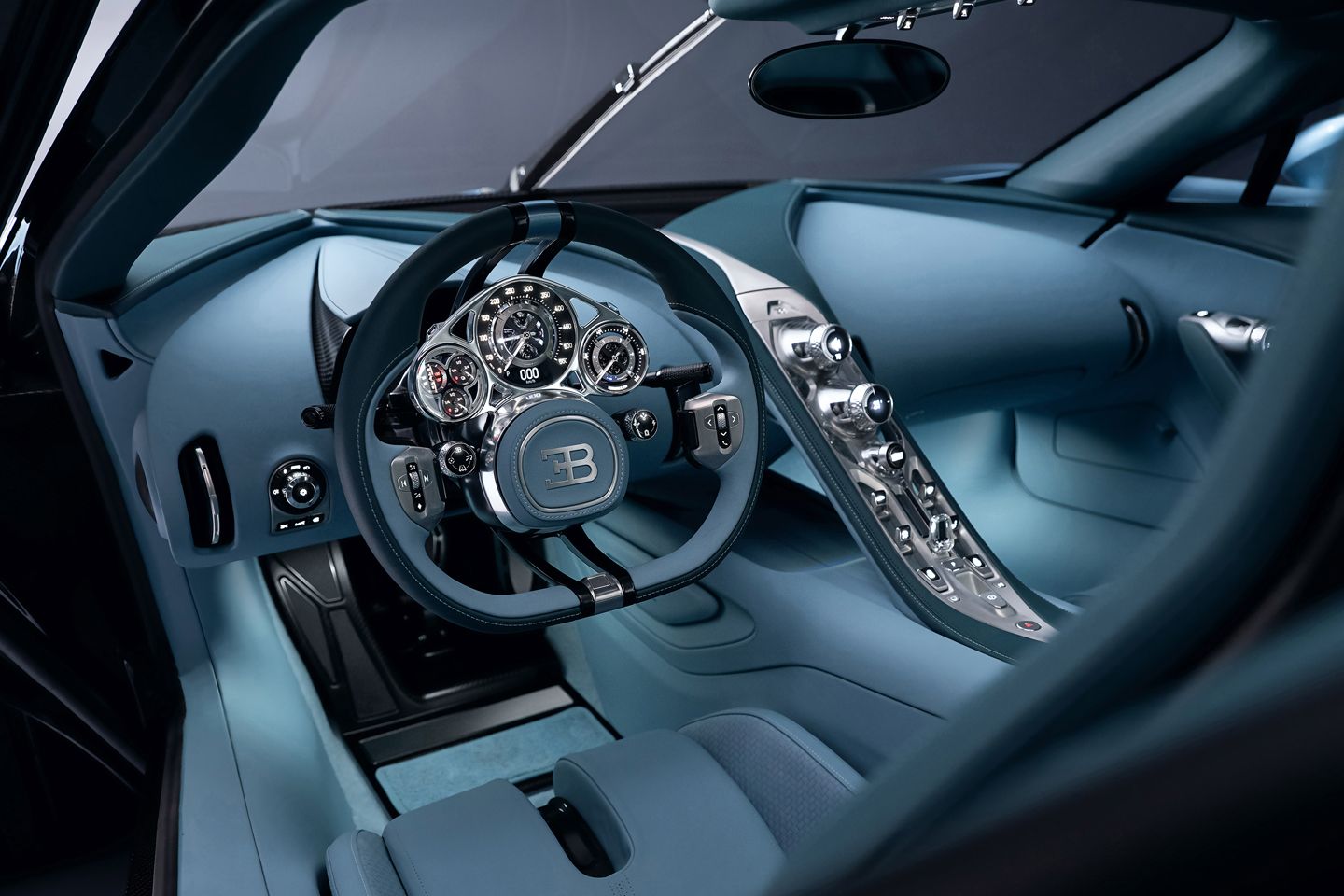
To achieve the appropriate sense of “mechanical timelessness”, Bugatti took the Tourbillon in seemingly different (albeit impressively well resolved) directions. Finally, there’s a manufacturer that understands that distractingly large digital touchscreens effectively label a car with an expiration date. We’ll get to the stunningly gorgeous analog instrument panel in a moment, but suffice it to say that Bugatti wants the Tourbillon to be considered heirloom-worthy by anyone with the money to buy one. At the same time, it gives them one of the most complex and advanced powertrains ever created, on a platform and body full of patents and “technical beauty”.
So let’s start with the V16, all 8.3 liters of it. “The powertrain was perhaps the most important decision we had to make considering all the options available to us; redesign the W16, go all-electric or create something entirely new,” commented Emilio Scervo, Bugatti’s technical director. “In the end, we took the hardest possible option, creating the drivetrain from scratch and seamlessly pairing it with a complex system of e-motors, a new generation eight-speed dual-clutch transmission, and more, developed from the ground up specifically for the Tourbillon.”
Mate Rimac has openly insisted that any new Bugatti must be primarily combustion-powered, and to the company’s credit, the “pure and raw analog feel of a naturally aspirated combustion engine” was considered essential to the way its hypercar would drive. . Other than that, the unit itself seems to be quite a worthy – if very different – successor to the W16. The 90-degree V16, engineered with the help of Cosworth, develops 1,000 horsepower and 664 lb ft of torque and runs at 9,000 rpm. Unsurprisingly, it’s said to offer a “visceral, awe-inspiring experience” at these engine revs and, thanks to the lightweight materials used in its construction, weighs just 252kg.
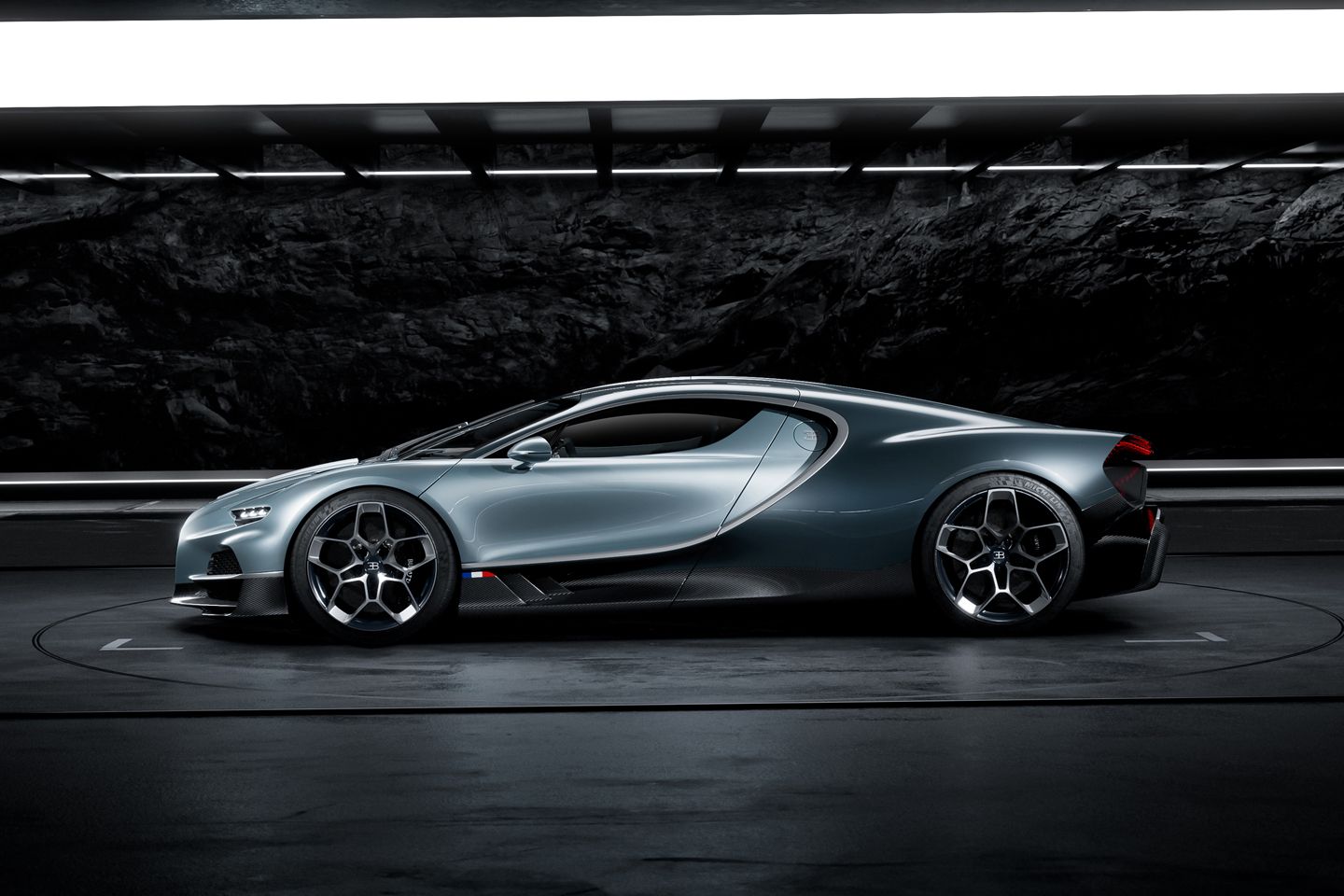
The remarkable petrol engine is paired with a front ‘e-axle’ that features two independent 340bhp electric motors, theoretically capable of delivering up to 2,213lb ft of fully vectored torque to the wheels. On the rear axle, there is an additional engine with a power of 340 pcs of an equivalent design with 24,000 rpm. – said to be among the most powerful in the world – although with just 177lb ft of torque claimed for it, rear-wheel supervision is likely to do the trick. drop to the V16 via an electronic limited-slip differential. The electric motors are powered by an oil-cooled 800V 24.8kWh battery located in the center tunnel and behind the passengers, capable of delivering over 600kW of power at its peak as well as 37 miles of pure electric range. If you need it.
While we’re yet to learn how the powertrain, including the new eight-speed dual-clutch gearbox, works in detail (although Bugatti’s reference to the “instant torque and flexibility of the electric motors” suggests it will initially do all the hard work, as expected) the firm is happy confirms one striking fact: the Tourbillon, despite the addition of electric motors and inverters and battery cells, is marginally lighter than the Chiron it replaces. It’s true that its predecessor was hardly a flyweight prospect in its own right, but if the claimed 1,995kg (DIN) weight listed on the supplied spec sheet is to be taken at face value, it seems like a commendable achievement for a car that strives pack so much. technology in
As expected, the Tourbillon owes much of its belt-tightening to an all-new chassis and body structure, largely made of next-generation T800 carbon composite. The packaging itself appears to be a work of art. Not only is the battery integrated as part of the monocoque structure, Bugatti reckons the new front e-axle, including its dual converter, will fit in the same space that the Chiron had available. He describes the huge, motorsport-inspired “crash concept” rear diffuser as “unprecedented” and says the air ducts that flow through the front of the car are an integral part of the platform, which is not only lighter than its predecessor, but also stiffer. .
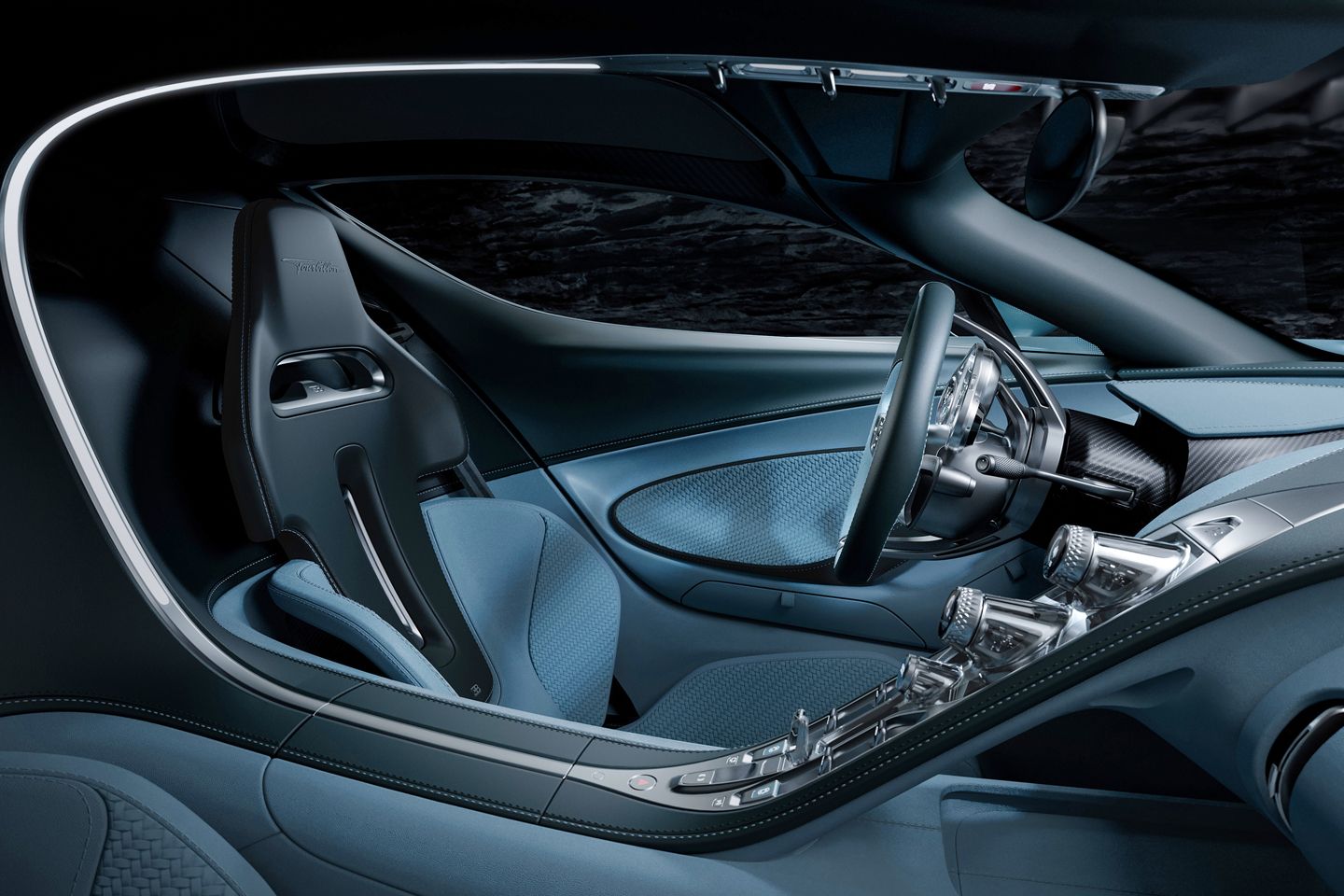
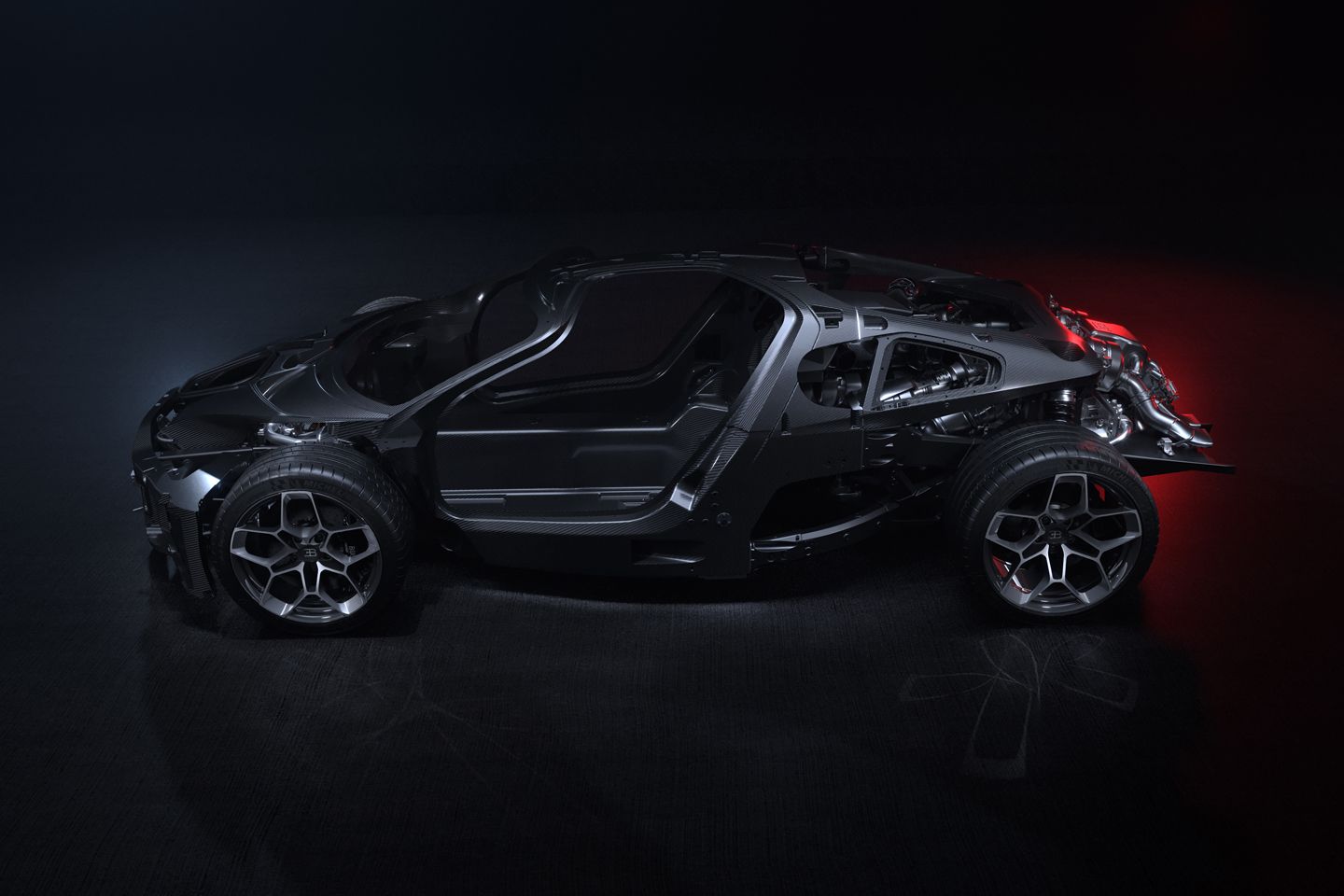
As for suspension, the Tourbillon features forged aluminum front and rear multi-link axles that replace the Chiron’s steel double wishbones and save around 45% of comparable weight. Bugatti says it made extensive use of 3D printing, not only in the new suspension arm and pillar, but also in the structural stiffeners in the front and rear subframes. The brakes are no less advanced, incorporating carbon-ceramic technology and controlled by a custom-built brake-by-wire system that is integrated into the Bugatti-developed non-linear hybrid drive controller. The huge tires – 285/35 R20 front, 345/30 R21 rear – are a bespoke Michelin Pilot Cup Sport 2 variant.
The size of the contact surfaces tells about the power that flows through them. Bugatti isn’t particularly fussy about the claimed acceleration times – perhaps because they won’t eclipse the record-breaking Rimac Nevera – but they’re exceptional nonetheless: 0-62mph in 2.0 seconds; 0-124 mph in 5.0 seconds; 0-186 mph in 10 seconds; 0-248 mph in 25 seconds. For reference, the Chiron Super Sport 300+ managed 0-124 mph in 5.8 seconds and 0-186 mph in 12.1 seconds. Compared to the Veyron 16.4, the Tourbillon is 6.7 seconds faster to 186 mph. As with its predecessors, the car’s top speed in normal operation is limited to 236 mph; its higher limit of 276 mph must be accessed with a designated speed key.
As before, the ability to exceed 400 km/h leaves its mark on the car’s style. Aerodynamic (and thermodynamic) efficiency is cited as the main principle for the “formed by speed” silhouette alongside four traditional design elements: the horseshoe grille, the so-called “Bugatti Line”, the central ridge and the two-tone split. So the result is familiar – or at least instantly recognizable as a Bugatti, which is at least partly the point. But innovation abounds, not least in the power bi-fold doors that can be opened and closed with a key fob to provide a “dramatic sense of arrival”.
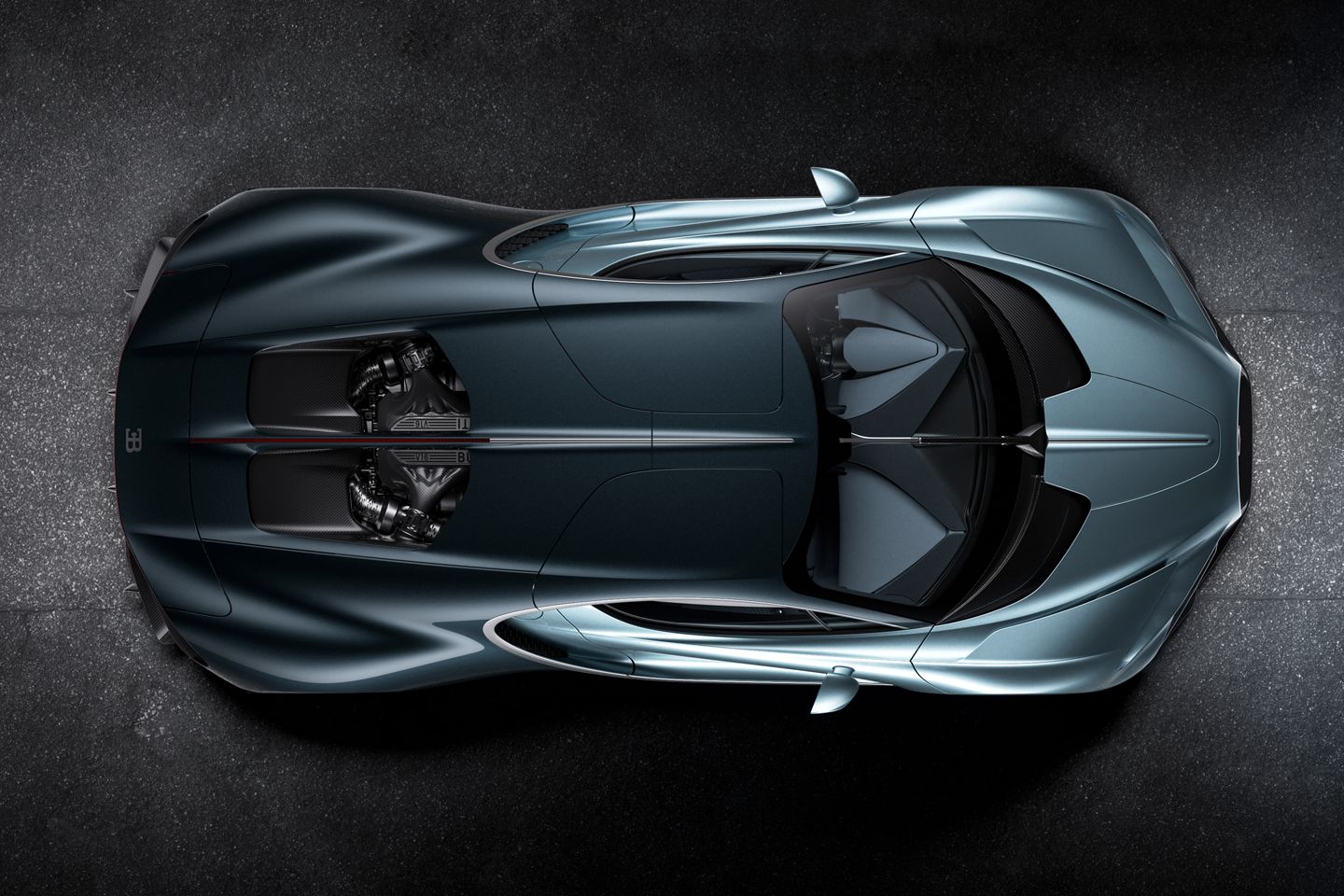
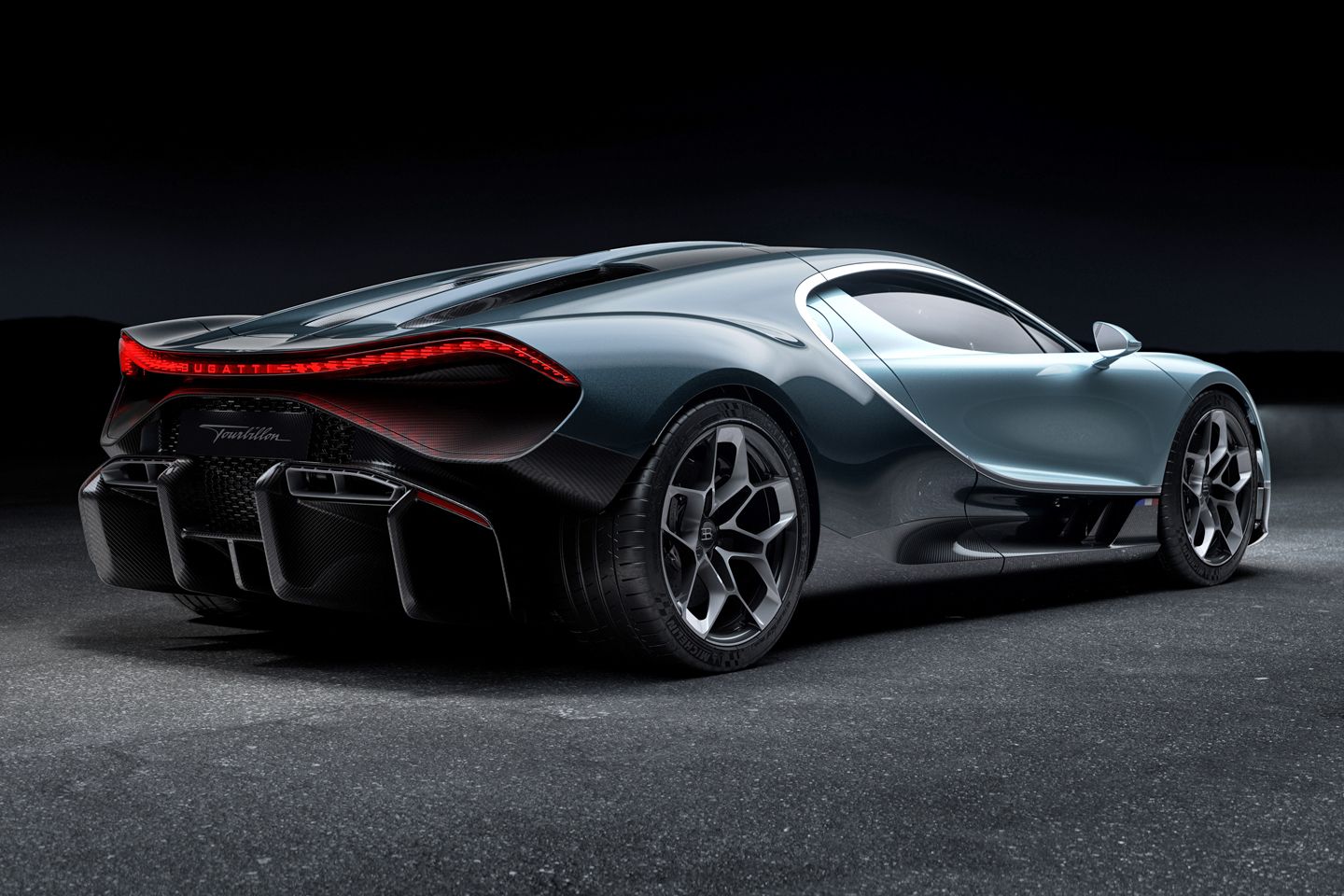
The real wow moment is stored inside. There is actually a screen, but only one, and unless prompted, it’s completely hidden from view inside the center console. Otherwise, the interior looks authentic and very effectively analogous. The instrument panel? Made by Swiss watchmakers (obvs) in titanium, it contains 600 parts, including precious stones, with a fixed hub dial for an unobstructed view. Center console? The aluminum parts are milled from a single block of metal, while the crystal glass goes through 13 stages to ensure clarity and toughness. Seats? Fixed to the floor for lightness with an electrically adjustable pedal box for comfort. Starting the engine? Pull lever, just to increase the physical experience. In short, Bugatti says it’s a “masterpiece of packaging and engineering.” Hard to argue with that from here.
Of course, it should be, because its manufacturer charges championship prices. Although it is only now entering a dynamic testing phase ahead of customer deliveries in 2026, the firm has confirmed that only 250 examples of the Tourbillon will be handcrafted at the Bugatti Atelier in Molsheim, with a net starting price of €3.8 million. Or around £3.2 million. However, Mate Rimac, who is clearly the driving force behind many of the more groundbreaking decisions, is adamant that she was right: “So yes, it’s crazy to build a new V16 engine, integrate it with a new battery and electric motors and have a real Swiss-made instrument panel and 3D printed suspension parts and a crystal glass center console,” he said. “But that’s what Ettore would have done, and that’s what makes Bugatti incomparable and timeless. Without such ambitions, you could create a great hyper sports car, but you wouldn’t create an icon Pour l’éternité.” Only time will tell if this is true.